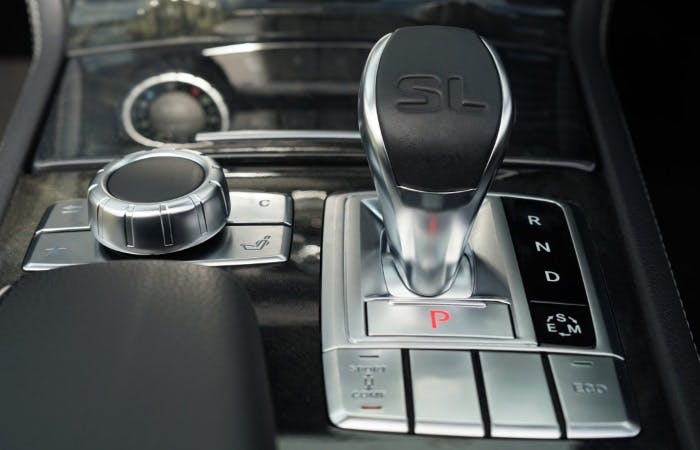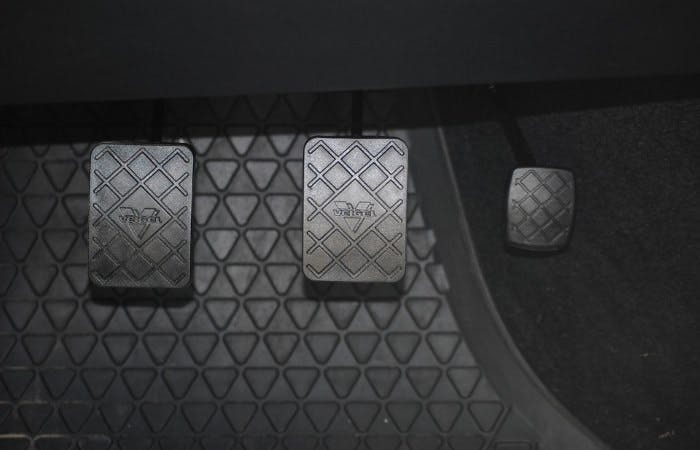The Pros and Cons of Learning to Drive in an Automatic Car
January 11, 2024
•4 min read
Leon McKenzie
Content Writer

When you’re learning to drive, you might be eager to look for the quickest and easiest way to get yourself off the bus and on the motorway. Some people may have told you that taking automatic lessons would be best, while others are passionately Team Manual. But is automatic easier? PassMeFast is here to give you the rundown and help you make the best decision.
Is it easier to drive an automatic car?
If you’re new to driving, you’re probably wondering what the difference between manual and automatic transmission is, and which is easier. Long story short, the transmission type controls the way you switch gears when driving.
In a manual car, you need to change gears regularly as you drive. You’ll use the gear stick to do this, and the power and acceleration of the engine will change depending on which gear you’re in. A higher gear provides less power but more speed, whereas a lower gear is used in situations where you need more power but less speed (like driving up a steep hill).
To change gears, you’d let go of the acceleration pedal and press down on the clutch pedal, both at the same time. You’d then use the gear knob to select which gear position you need to be in. It can be difficult to do all of this at once when you’re new to driving, but you’ll soon get used to it and it’ll become second nature.
In an automatic car, as the name suggests, the gear changes are all done automatically. There’s no need to press down the clutch pedal or go from 1st to 4th. The car’s automatic transmission box will do all the hard work for you.
Since there’s no need for you to change gears, automatic cars don’t have a clutch, and the gear stick gives you four options: Neutral (N), Reverse (R), Park (P) and Drive (D). Just select the right position, and the engine will do the rest for you. Because there’s less work involved in driving an automatic car, it’s generally viewed as easier to drive than a manual.
Why should I choose manual driving lessons?

After reading about the differences between the two, it might be tempting to go straight for auto, but there are some downsides that you’ll need to think about first. Nothing is ever that simple!
The big issue is that if you pass your driving test in an auto car, you won’t be allowed to drive a manual car unless you take another test in a manual car. On the flip side, if you pass in a manual, you’ll be able to drive an auto without taking any other tests.
This makes sense when you think about it. If you go from manual to automatic, you’ll have more knowledge than you need, but if you go from automatic to manual driving, you need to perfect a whole new skill. Not knowing how to change gears won’t get you very far from your driveway.
The other issue with driving in an auto is that it can often be more expensive than a manual car. Automatic cars are usually more expensive since they’re fitted with more technology than your standard manual car. Having your car do the work for you doesn’t come cheap. With all that added tech, you’ll usually need to pay out more if your car needs some TLC. This translates over to driving lessons in an auto car too — they’re usually more expensive than manual driving lessons.
Benefits of learning to drive in an automatic car

It's not all bad news though! There are some obvious pros to driving an automatic car. It’s accepted by most drivers that they’re easier to control, and some people learn to drive faster because there’s less to focus on. If you’re especially nervous about driving lessons, you might find that an automatic will be easier to manage and will ease your nerves.
Although automatic cars are usually more expensive, the price difference between the two transmissions seems to be levelling out in recent years. As part of the UK’s plan to cut carbon emissions, new petrol and diesel cars will be banned from 2030. All electric cars are automatic, so everyone will be driving automatic in a few years, anyway. In other words, electric cars are the future!
Since automatic cars are generally easier to control, people with physical disabilities usually choose auto transmission over manual. Depending on your disability, driving in an auto might make you less fatigued. If you have limited movement in your legs, you could find it easier to use two pedals rather than three.
That’s not to say you need to drive in an automatic if you’re disabled. Everyone is different. If you’re learning to drive with a medical condition, we’d encourage you to do some research into what is best for you according to your own needs.
Subscribe for driving advice, offers & more
We'd love to let you know about our courses, news and offers via email. You may unsubscribe at any time.
Star Genie Limited trading as PassMeFast. Company number 10093359
Copyright © 2024 owned by Star Genie Limited
PassMeFast, Blue Tower, MediaCityUK, Salford, M50 2ST
